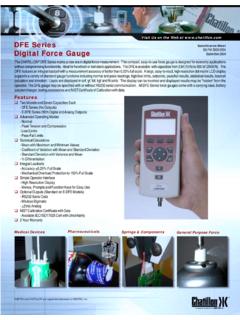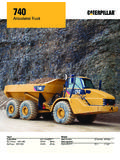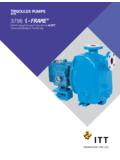Transcription of Identification of Hazards and Risk Assessment for a …
1 Greener Journal of Science Engineering and Technological Research ISSN: 2276-7835 Vol. 2 (2), pp. 039-047, September 2012. Research Article Identification of Hazards and Risk Assessment for a 40kVA Diesel Powered Lighting Set. 1. Olabiyi Banji Ajadi, 2 Adegbola Amos Adekunle and 3 Kolawole Oladele Peter 1. The Polytechnic Ibadan, Mechanical Engineering Dept. 2. Head of Department, The Polytechnic Ibadan, Mechanical Engineering Dept. 3. FMS, IITA Ibadan Emails: Corresponding Author's Email: Abstract The process of installing, operating and maintaining power sets carries with them occupational Hazards , the Hazards and risks associated with installation, operation and maintenance of diesel powered generator using a 40kVA generator was identified. The findings reveal that five major jobs or tasks were associated with the events of installation, operation and maintenance of any typical industrial standby generator.
2 Hazards of varying degrees were identified with every section and jobbing of the whole activities. The associated risk was classification, about 60 percent high risk to 40 percent medium risk. The most hazardous tasks include, engine operation, electrical wiring and connection to the generator. The receipt and installation of the generator with preparation of foundation and engine maintenance were identified. KEYWORDS: Diesel Power, Operation, Maintenance, Risk, Assessment 1. Introduction Constant power supply is a measure of developed economy and any nation with epileptic power supply are prolonging their development. Developing countries are facing extreme electricity shortages (Julia, 2008). Lighting sets installation has been the alternative sources of power in conjunction with other alternative power.
3 risks are involved during the installation of these machines. The process of installing, operating and maintaining power sets carries with them occupational Hazards leading to injury at work place which could lead to loss of man-hours. Risk assessments are used when identifying potential Hazards . The objective of the paper is to identify Hazards and risks associated with installation, operation and maintenance of diesel powered generator using a 40kVA generator as case study. The diesel engine is a type of internal combustion engine, more specifically; it is a compression ignition engine. The fuel in a diesel engine is ignited by suddenly exposing it to high temperature created by pressure of a compressed gas containing oxygen (usually atmospheric air), rather than a separate source of ignition energy (such as a spark plug).
4 This process is known as the diesel cycle named after Rudolf Diesel, who invented it in 1892. While traditional diesel engine generators may not fit into our definition of alternative energy' sources, they are still a valuable addition to a remote power or grid back-up system. There are two classes of diesel engines: two-stroke and four-stroke. Most diesel engines generally use the four-stroke cycle, with some larger engines operating on the two- stroke cycle. Normally, banks of cylinders are used in multiples of two, though any number of cylinders can be used as long as the load on the crankshaft is counterbalanced to present excessive vibration. Generating sets produce either single or three phase power. Most homeowners require single phase whereas industrial or commercial applications usually require three phase power.
5 Diesel engine generators are recommended due to their longevity and lower operating costs. Modern diesel engines are quiet and generally require much less maintenance than comparably sized gas (natural gas or propane) units. Diesel generators are designed to meet the needs of small and medium-sized businesses apart from heavy usage in industries. A. generator is a revolutionary product that brings clean and affordable standby power within the reach of millions of enterprises, homes and small businesses. Reducing the cost of backup power and making generators easy to install is becoming the norm these days. Businesses lose money when they shut down during a blackout. Most modern generators are engineered to meet emergency power needs. These units continuously monitor the electrical current and automatically start up if power is interrupted and shut off when utility service is returned.
6 In industries, during critical processes, generators can supply emergency power to all vital and selected loads as desired. This quality 39. Greener Journal of Science Engineering and Technological Research ISSN: 2276-7835 Vol. 2 (2), pp. 039-047, September 2012. leads to widespread use of diesel-powered generators across recreational, residential, commercial, communication, and industrial applications. Today, most state-of-the-art-hospitals, five star hotels, business process outsourcing centers, manufacturing plants, telecommunications organizations, commercial buildings, data centers, emergency facilities, large industries, and mining companies require uninterrupted power and have backup diesel engine generators. Benefits of Diesel Generator (a) Use of Diesel Generators as Micro Power Grids in Remote Areas In countries where grid infrastructures are very minimal for expansive transmission and distribution to rural areas and less cities, powering up such locations faces budgetary constraints.
7 In this situation, the installations of diesel generators are an ideal solution to meet domestic needs and also high-energy requirements in rural areas. Diesel generators are easy to install and can either be used as standalone systems or as part of hybrid systems in conjunction with other sources like solar power. The main advantage of such a system is the sourcing of power by the lowest cost option depending on the operating environment and time of day. (b) Agriculture Diesel generators have established themselves as versatile and durable sources of power generation in developing countries for use in lighting, irrigation pumping, cottage industries, and rural processing facilities, just to name a few. (c) Barge-Mounted Diesel Generators (BMDs). BMDs are simple diesel engines and generators that are mounted on offshore barges.
8 These units are available in a range of capacities from 5MW to 50MW and several units can be coupled together on a single barge to provide more than 100MW of power. These units can be linked to the power grid through a substation based on the shore. Unlike land-based power generation plants, BMDs makes them attractive alternative to land-based fixed power generation plants in mining and offshore drilling projects. (d) Information Technology (IT) and Data Centers Developing nations are increasingly becoming preferred outsourcing locations for IT projects and for setting up data centers. As it is in the developed world, diesel generators serve as one of the most efficient backup power systems in the event of power failures to prevent loss of data and to enable business continuity.
9 (e) Infrastructure Development Growing economies are invariably accompanied by development in infrastructure. Diesel generators ensure round- the-clock power supply not only in remote locations but also in the event of grid failure. (f) Bridging the Gap between Power Demand and Supply Even as power-generating utilities in developing nations are trying to keep pace with the rapid surge in re requirements, demand for power always seems to outpace supply, leading to peak power deficits. This can lead to scheduled and unscheduled load shedding or brownouts. The use of diesel generators as backup power units in residential and commercial building is also an attractive and widely prevalent alternative. Concepts of Hazards A hazard is an existing (or potential) Hazards or unsafe condition or work practice that, by itself or in combination with other conditions, could cause injury, illness, or death to workers, as well as cause property damage.
10 Occupational hazard may be classified into two broad categories: (i) health Hazards and (ii) safety Hazards . Generally, health Hazards cause occupational illnesses, such as noise induced hearing loss (NHL), skin infections or impairment to any of the human body organ. Safety Hazards cause physical harm, such as cuts, broken bones or fall from a height and so on. Hazards may exist from: 40. Greener Journal of Science Engineering and Technological Research ISSN: 2276-7835 Vol. 2 (2), pp. 039-047, September 2012. (i) Processes or procedures-any series of actions or operations (manufacturing, equipment, product flow, etc., and handling) that convert raw material into a product. (ii) Unsafe equipment, machinery, or tools-for example damaged tools, unguarded blades or unguarded moving parts, etc (iii) Unsafe work practices allowing untrained workers to perform hazardous tasks, taking unsafe shortcuts, being distracted, working long shifts etc.




